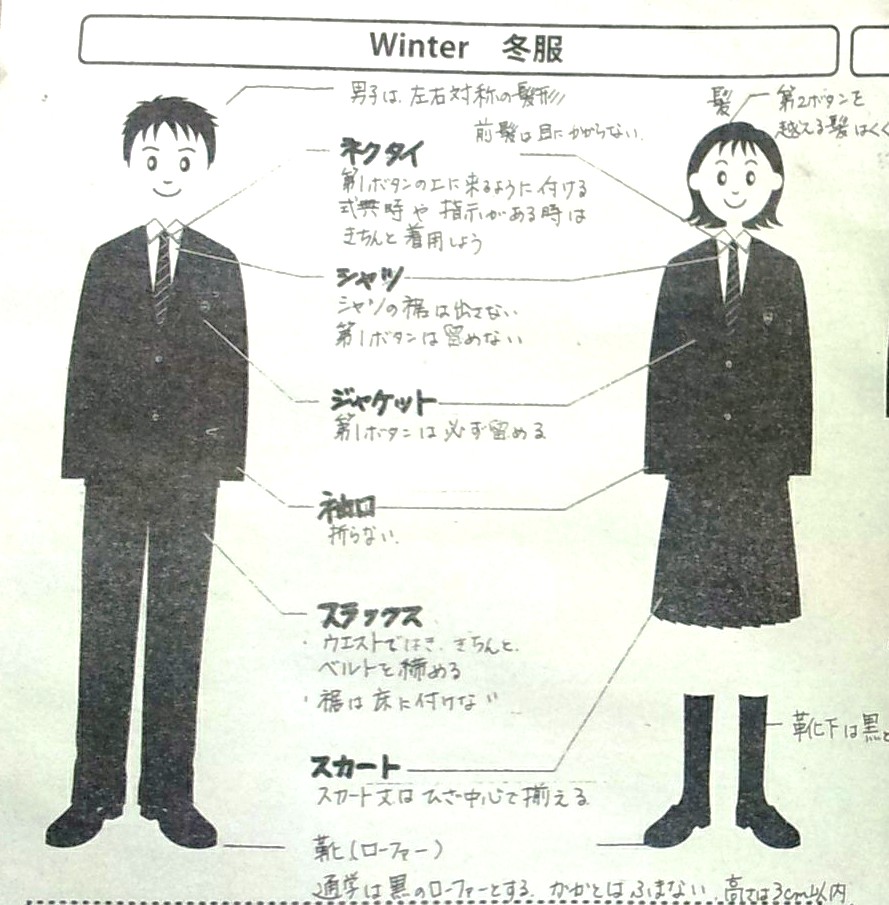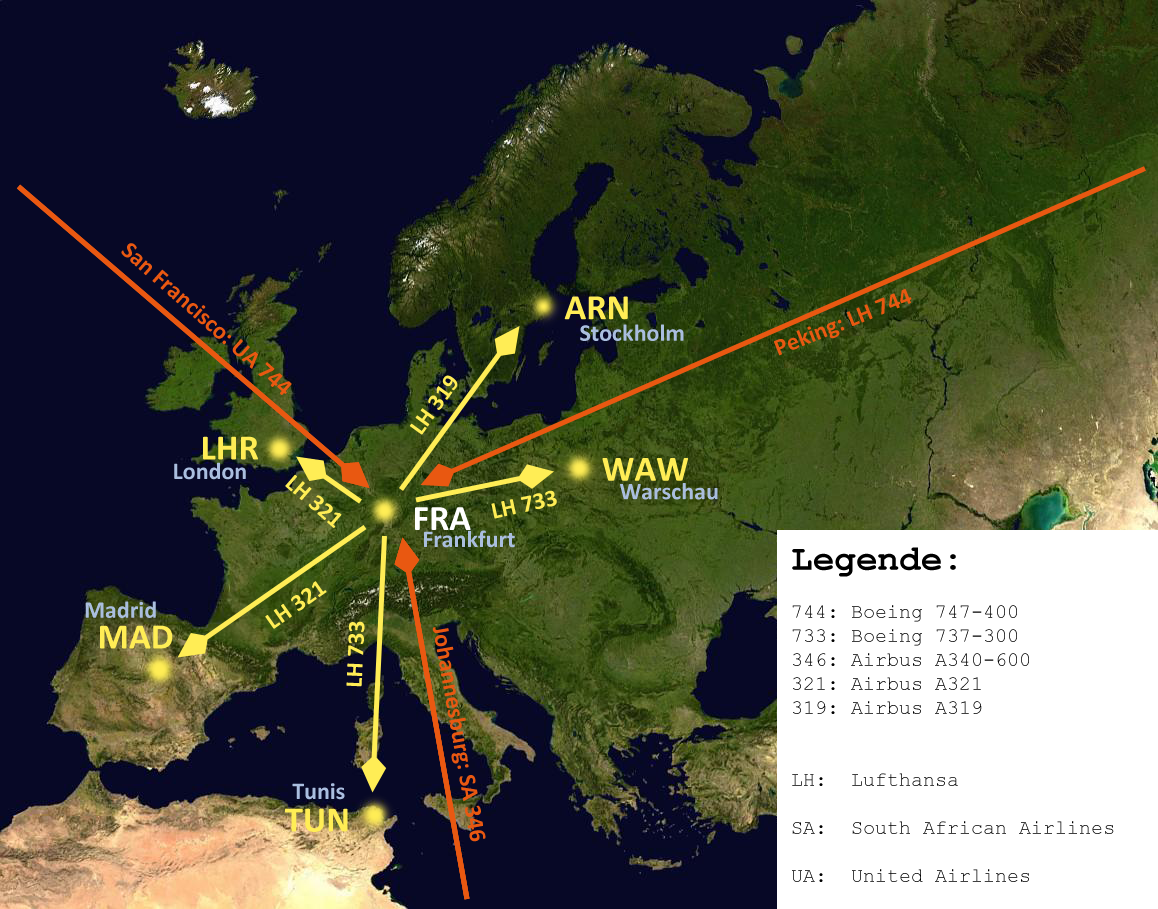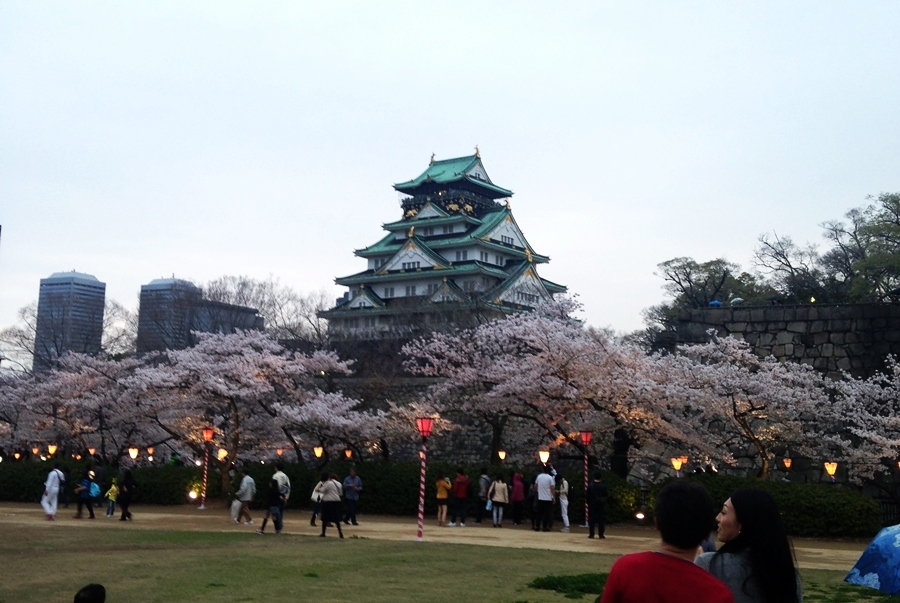Special Feature: A Fighting Fit
– A guide to Japanese school uniforms
One of the negative aspects to an extended stay in Japan is the normalisation of Japanese life that would draw the stares and cameras of many a foreign tourist. Never is this more evident than in the casual acceptance of students dressed in some of the most distinctive school uniforms in the world, a relic from Japan’s rapid and fanatical adaption of Western culture at the turn of the century.
Students began wearing uniforms, or seifuku, in the Meji Era, to prevent their clothes and appearance from revealing their family background. Originally the uniform consisted of a more formal hakama kimono, the andon bakama, chosen by the Ministry of Education to increase the profile of its students. However this traditional garb was not spared the Westernisation of Japan in the early twentieth century, and the hakama was replaced with the more functional and practical Western style, based on military uniforms from Europe.
Let’s hear it for the boys
Arguably one of the most recognisable school uniforms in the world, the black, brass-buttoned, high necked gakuran is worn by most male junior and senior high school students. Gakuran is a composite word, formed from “gaku†(meaning study or student), and “ran†(meaning the West). The uniform is based on formal military dress from the Meji era, which itself is based on European style military uniforms. Depending on the attitude of your school, it is not uncommon to see boys with their top buttons unbuttoned, or otherwise subverting the system with their trousers worn low and rolled up at the ankle.
And what of the buttons? Usually decorated with the school emblem, the second button from the top of the gakuran is often given away to the object of a young man’s affection, being the button closest to his heart, and containing all the emotions from three years at school. However given the Japanese propensity for shyness, it is not uncommon for enterprising girls to instead ask their crush for his dai-ni button, knowing their love is reciprocated if he obliges.
This tradition may come under difficulty in the future, as many schools have since adopted a Western style uniform consisting of white shirt, tie, blazer with school crest, and trousers.
Girls just wanna have fun
Whether from watching Sailor Moon in the early nineties or your own eyes you will be familiar with the British navy inspired, “sailor fuku†uniform. Worn by junior and, traditionally, senior high school students, the uniform was introduced in 1920 to a Fukuoka girl’s college, influenced by the headmistress’ stay in Britain as an exchange student. Modelled after the British naval uniform at the time, the sailor fuku incorporates a blouse with attached sailor collar, worn with a low, pleated skirt. A ribbon, or some other variation, is tied in front.
Again, schools, especially high schools, have gradually moved away from this style to a more western style uniform, consisting of a white blouse, school ribbon, and tartan skirt. Allegedly this is because sukeban, or “delinquent girl†gangs, began modifying the traditional sailor fuku to project a tougher look, with longer skirts and shorter shirts. It is also partly due to the fetishisation of the uniforms in Japanese popular culture. Having a more western uniform, however, hasn’t exactly prevented the same sort of uniform delinquency that caused the sailor fuku’s demise, and it is common for students to wear skirts rolled up at the waist to an indecently short height.
Â
So what is next for Japanese school uniforms? Eager to prevent the uniform “vandalism†that occurs at any attempt to suppress the individuality of youth, companies have increasingly created and marketed interesting new uniform gimmicks. This includes a skirt with an elastic snap device (which automatically returns a shortened skirt to its usual length), or shirttails that display the school’s name if left untucked – whether this would act as a deterrent or simply invent a new uniform fad remains to be seen.
As our increasing interconnectivity and internationalisation eases the introduction of Western culture into Japan, it remains to be seen whether the gakuran and sailor fuku will survive in the face of the more practical Western style uniform. Are these anachronistic outfits so distinctively Japanese they will stand against this second wave of westernisation? Or will our global homogenisation see their end, leaving only hasty snapshots of Japan’s young soldiers as a reminder of what was.
Kylie Pinder






